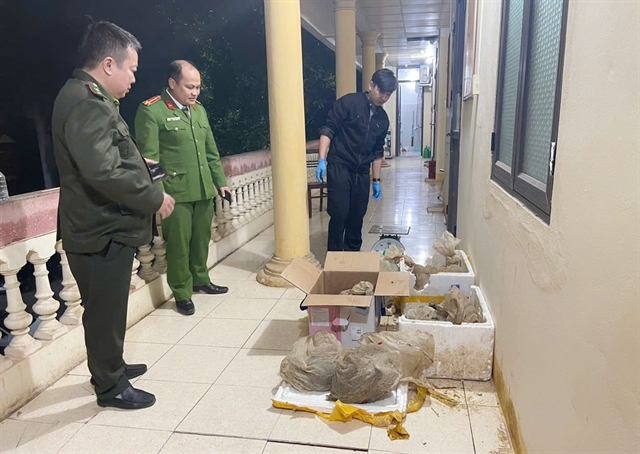 Environment
Environment

 |
| This murky, polluted water flows directly into the canal, which then flows into the Pheo River in Hà Nội's Bắc Từ Liêm District. Photo kintedothi.vn |
HÀ NỘI – The city capital of Hà Nội, in recent years, has carried out several projects to revive polluted rivers, but has been negligent around hundreds of ditches and canals that are daily directly discharging large volumes of wastewater into the rivers.
The root of the pollution in Hà Nội’s major rivers is not only the direct discharge of wastewater, but also the city’s intricate canal and ditch network, which serves as its drainage system.
Many of these canals are severely polluted and have turned into open sewers, carrying all kinds of waste directly into the rivers.
It is time to take this issue seriously and adopt fundamental solutions, beginning with cleaning the canal system before implementing broader, more ambitious river-cleaning strategies.
Hà Nội currently has over 200km of drainage canals, which discharge nearly 300,000cu.m of wastewater per day – most of it untreated.
As urbanisation accelerates, many canals are choked with rubbish and are turning into pollution hotspots and feeders into the wider system, posing serious health threats to residents.
In fact, large volumes of domestic wastewater from residential areas, factories and craft villages are discharged into these canals before flowing directly into inner-city rivers such as the Pheo, Nhuệ and Đáy.
Poor management of the canals has made them the primary source of river pollution.
Without tackling this root cause, any river-cleaning effort will be superficial and unsustainable.
Cleaning the canals will not only reduce the pollutant load entering rivers, but also yield clear economic and social benefits.
According to experts, compared to large-scale wastewater treatment projects or full-scale river restorations, canal clean-up initiatives are more cost-effective, easier to implement and provide immediate benefits to surrounding communities.
Improving canal water quality also means enhancing public health and reducing the risk of waterborne diseases – a problem affecting millions of Hà Nội residents each year.
The former deputy director of the Institute of Environmental Science and Technology at Hà Nội University of Science and Technology, Professor Dr Đặng Thị Kim Chi, said that reducing pollution in the canals requires reducing the amount of wastewater discharged into them.
Likewise, improving water quality in canals and ditches must start from the source.
“If we combine source-blocking measures with technical solutions, I believe the smell will dissipate and the canals will gradually become clean again,” she told kinhtedothi.vn.
“Local authorities - from neighbourhood groups to wards and districts - must strictly monitor discharges into canals and ditches and impose appropriate penalties to set an example.”
From a management perspective, the expert recommends that Hà Nội should complete a legal framework to effectively manage its canals. Specific regulations outlining the responsibilities of agencies and localities in pollution monitoring and treatment should be introduced.
Charging environmental protection fees for wastewater is one way to generate funding for environmental projects.
An automated water quality monitoring system should also be deployed across the canal network to quickly detect and address pollution sources. VNS